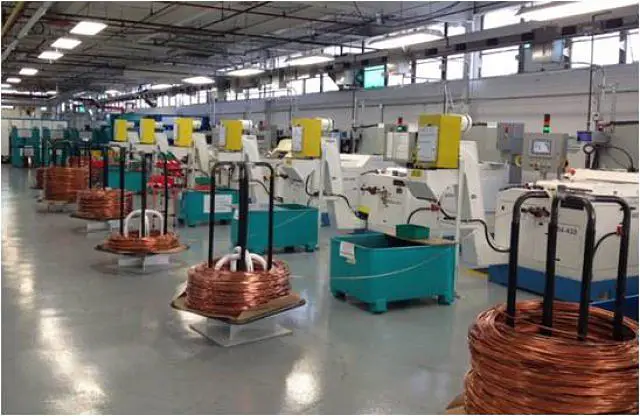Breaking news
United States has renovated production line of 5.56mm bullets to produce new M855A1 cartridge 281013.
| a | |||
Defence & Security News - United States |
|||
| Monday, October 28, 2013 11:08 AM | |||
United
States has renovated production line of 5.56mm bullets to produce new
M855A1 cartridge. |
|||
| The
United States Program Executive Office for Ammunition's Enhanced Performance
Round program shaved off more than $20 million dollars in a value engineering
project aimed at renovating the bullet production lines and improving
the program's purchasing strategies. The M855A1 Enhanced Performance Round,
or EPR, is the newest member of the Army's small-caliber family of munitions
fired from the 5.56mm family of weapons. It is replacing the M855 cartridge.
|
|||
 M855A1 slug cold heading operations at Lake City Army Ammunition Plant, Lake City, Mo. |
|||
| The M855A1 EPR's new bullet design provides Soldiers with better hard-target penetration and more consistent soft-target performance at increased distances. Additionally, because it is lead-free, the M855A1 allows training exercises to occur on ranges where lead projectiles are no longer permitted. The M855A1 5.56mm EPR ball cartridge costs have been reduced by incorporating low cost component manufacturing methods, improving production efficiency to the high speed SCAMP (Small Caliber Ammunition Modernization Program) cartridge production line, and enhancing purchasing strategies and competitive buying. Many
of the modifications began in fiscal year 2011 and continued until all
improvements were realized in the fiscal year 2013 contracts. The changes
reduced cost while maintaining the desired performance and quality of
the cartridge. This projectile configuration, with complex and tight tolerances, required significant engineering work by engineers at the Armament Research, Development and Engineering Center at Picatinny Arsenal, and Alliant Techsystems contractors at Lake City, Mo., to facilitate large scale manufacturing. Another key in the low cost manufacturing of the bullet was the implementation of the M855A1 projectile onto the SCAMP line, which is able to assemble projectiles at a high rate. This included the refinement of the tooling package and changes to the in-process handling. Currently, the SCAMP process now manufactures the same projectile as the bullet assembly presses with the same performance capability. |
|||



















